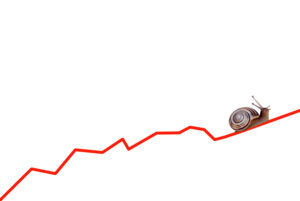What does the year have in store for property/casualty insurers?
There have been a lot of predictions published since late last year, with most forecasters commenting on insurance market conditions, and a few offering updates on economic growth and technology trends as well.
Rate hikes are expected to continue for the next year or two for most property/casualty lines, according to 2020 outlooks from analysts at Fitch Ratings, Willis Towers Watson and USI Insurance Services, among others (see below).
Several analysts predict a harder soft market, and S&P Global Ratings believes that social inflation may be the impetus that triggers a movement in pricing.
Carrier Management editors have summarized a collection of outlook reports, so that readers have a reference to all of them in a single place.
Fitch Predicts Slight Improvement in 2020 Underwriting Profit; Personal Auto to Breakeven
With rising premium rates modestly boosting underwriting results in most lines, Fitch Ratings analysts project an overall combined ratio of 97 in 2020, just slightly better than a 98 combined ratio estimate for 2019.
The Dec. 5, 2019 report, “Fitch Ratings 2020 Outlook: U.S. Property/Casualty Insurance,” also forecasts overall written 2020 premium growth—4.4 percent on a direct basis and 3.9 percent net.
Pricing changes are forecast to modestly outpace loss costs in 2020, contributing to the slight improvement in underwriting results. However, Fitch analysts note some potentially disruptive issues to watch: rising litigation costs and social inflation in the liability space and the risk of catastrophe losses.
 In addition, countering upward price movements in other lines, workers compensation and personal auto rates are continuing to drop. Although workers comp pricing has declined for five straight years, it remains the most profitable of the commercial lines. On the personal lines side, automobile pricing may have peaked, Fitch says in the P/C outlook report and in a separate report, “Personal Auto Underwriting Performance: Results Likely to Peak.”
In addition, countering upward price movements in other lines, workers compensation and personal auto rates are continuing to drop. Although workers comp pricing has declined for five straight years, it remains the most profitable of the commercial lines. On the personal lines side, automobile pricing may have peaked, Fitch says in the P/C outlook report and in a separate report, “Personal Auto Underwriting Performance: Results Likely to Peak.”
For personal auto specifically, Fitch Ratings projects a 2019 statutory combined ratio of 98, rising to breakeven levels in 2020.
The bottom line: “The U.S. property/casualty insurance industry is positioned for moderate improvement in underwriting profits for 2019 and 2020,” says James Auden, managing director and North American head of Non-Life Insurance Ratings atFitch Ratings. Pricing momentum in many commercial insurance lines is offset by prospects for weakening performance in personal auto and workers comp. Concern regarding adverse claims trends in several casualty segments also tempers the potential for near-term profit improvement.
(Read more in the Carrier Management articles, “U.S. P/C Insurers Should See Small Underwriting Profit Gains for 2020: Fitch” and “Robust Personal Auto Insurance Market Will Slow in 2020: Fitch Prediction.”)
“Unprecedented Discipline”: Willis Towers Watson Sees Rate Hikes Persisting Into 2021
“We predict that rate hikes and capacity constrictions will continue throughout 2020 and likely into 2021.”
Joseph C. Peiser, global head of Broking for Willis Towers Watson, delivered the forecast in a video introduction of his firm’s mid-November 2019 report titled “2020 Insurance Marketplace Realities.”
Highlighting property, umbrella and public company D&O as the “most challenged lines” of insurance—experiencing the most widespread price increases and capacity withdrawals—he said “the global insurance market is demonstrating unprecedented discipline” in these areas and others.
While price increases continue, “we expect a more orderly market to emerge by mid-2020, especially for property,” he said. “By that point, the bulk of the re-underwriting by some major property insurers should be largely complete.”
Price predictions in the report for key lines are:
- Non cat-exposed property risks, increases of 5-15 percent
- Cat-exposed property with losses, increases of 15-30-plus percent
- Umbrella, 12-20
- Primary public company D&O, 17.5-50-plus
Umbrella and D&O for public companies “are likely to be difficult and unpredictable for the next four to six quarters…because we are experiencing what appears to be a fundamental and systemic change in liability losses—and not for the better,” Peiser said, pointing to the impact of social inflation on loss severity.
Overall for 2020, Willis Towers Watson expects price increases for 19 of 27 lines tracked in the report. “The message is not hard to decipher. Buyers are in a seller’s market across most lines, and we expect that to be the case throughout 2020,” the report says.
Fitch Analysis: Harder Soft Market for 2020
Harder market conditions may prevail in 2020, but the typical state of the market is soft, Fitch Ratings analysts said late last year in their report “The Property/Casualty Underwriting Cycle: Shallower Market Peaks and Valleys Ahead.”
Fitch Ratings defines a hard market as one in which “pricing and conditions are consistent with generating an adequate or better return on capital,” according to James Auden, managing director and North American head of Non-Life Insurance Ratings. “Soft market means that pricing is generating inadequate returns,” he said at the Fitch Ratings North American Insurance conference in November.
He contrasted the rating agency perspective with insurance brokers, who define hard and soft markets according to whether insurance prices are going up or down. “We refer to that as hardening or softening markets.”
“In aggregate, we would say that the market is normally a bit soft,” Auden noted, suggesting that while companies like Progressive earn above-average returns most of the time, the average company in the industry isn’t going to do so in most years. “Hard markets are very rare, and they don’t last long,” he said, recalling the last true hard market—from roughly 2003 to 2007.
“To get into a hard market, you need that shock to the system where capital is diminished, you have large losses and then a market reaction, pricing-wise,” he said. “And they don’t last too long because success breeds competition. [If] you have a great pricing opportunity, companies try to imitate the successful [insurers], and it goes away pretty quickly.”
The bottom line: The overall market is in a hardening pricing phase after gaining momentum in the past two quarters, Fitch Ratings says. However, competitive forces and less favorable claim trends in some key segments make it unlikely that recent rising premium rate trends will lead to enduring hard market profits and double-digit returns.
(Read more in the Carrier Management article, “P/C Insurance Market Typically Soft, Analysts Say.”)
USI Sees Rate Hikes Continuing in Most Lines
In a November 2019 report, USI Insurance Services predicted that rate increases and reductions in capacity for many property/casualty lines would continue into the new year, with the strongest price hikes in public D&O.
For 20 of 28 different product lines included in the Q4 2019-2020 P&C Insurance Market Outlook Report, USI lists higher rate change indications for the fourth-quarter 2019 than at midyear, anticipating more of the same in 2020.
Highlights from the report:
- Expected pricing conditions are getting worse for buyers of public D&O insurance, where the report shows late-2019 and early-2020 rate hikes of 25-50 percent—and doubling rates for troubled accounts.
- While many factors play in, “the main driver is simply increased loss costs colliding with more than a decade of historically low premiums in the D&O space, eroding insurer profitability.”
- For property insurance, fourth-quarter and early-2020 price hikes are coming in at anywhere from 10-20 percent for non-cat accounts to 30-60 percent on accounts with cat potential and poor loss history.
- With several years of attritional losses and higher-than-expect development on 2017 and 2018 catastrophes prompting higher pricing and reduced coverage from carriers, the report says that “resetting this market will likely carry [on] into 2020.”
- In casualty lines, USI sees rate hikes of 5-10 percent for primary liability and anywhere from 10-30 percent on excess (the higher end for larger buyers). While hopeful that rates will start leveling off in late 2020, “we don’t expect aggressive competition for premium dollars to manifest itself, at least to the degree necessary to begin stabilizing the marketplace.”
(A chart listing late 2019 and early 2020 rate changes for a dozen lines is available in the Carrier Management article, “What to Expect in 2020: USI Sees Rate Hikes In Most Lines.”)
Fitch U.S. P/C Rating Outlooks: Capital Is Source of Stability
Fitch Ratings said its rating outlooks for the personal and commercial lines segments of the U.S. property/casualty insurance market remain stable.
According to the Dec. 5, 2019 report, “Fitch Ratings 2020 Outlook: U.S. Property/Casualty Insurance,” a wide majority of Fitch’s coverage universe has stable outlooks, which indicates that ratings are unlikely to change in the next 12-18 months.
Supporting a stable sector outlook overall, Fitch projects that the industry return-on-surplus will remain above 8 percent in 2020 but thatthe overall industry is unlikely to generate double-digit returns on capital looking forward.
Moreover, the industry’s capital “remains very strong,…providing most individual insurers with resources to absorb near-term volatility and the effects of adverse events,” the report says. A combination of adverse events—catastrophes, investment losses, pricing errors, reserve deficiencies—that reduce capital levels in a short time span would likely be needed to prompt a change in industry outlooks and company ratings.
Fitch is also keeping its fundamental sector outlook for the U.S. property/casualty sector set at stable. Distinguishing sector outlooks from rating outlooks, analysts have explained that sector outlooks are essentially “performance-based outlooks or profit expectations” based on operating fundamentals.
Higher underwriting income in 2020 is anticipated, but investment income will likely be flat with portfolio yields hovering around 3 percent and realized investment gains likely coming in lower.
“Rising claims cost uncertainty in casualty lines adds potential for future adverse reserve development that may counterbalance potential for performance improvement,” the report says.
Fitch’s sector outlook also considers stabilizing characteristics in the rated company universe, such as solid business profiles, strong reserve positions and capital adequacy, and effective risk management processes.
Moody’s Forecasts Global Growth Will Remain Soft in 2020-2021, But No Recession Expected
Global growth will remain soft over the next two years, but no recession is expected, according to Moody’s Investors Service.
“As the global economy continues to slow toward a lower long-term trend, business sentiment across major economies has become downbeat and there is a sense that a recession is only a shock away,” said Moody’s in a report titled “Global Growth Will Remain Sluggish as Large Engines of Economic Activity Slow,” which was published on Nov. 14, 2019.
“Although we do not expect the global economy to enter a recession in 2020 or 2021, persistently weak data could fuel a self-fulfilling deterioration in sentiment and the growth outlook,” said the report, noting that trade tensions and geopolitical risk in the Middle East, East Asia and South Asia added to uncertainties and have made it difficult to make decisions about long-term spending and investment decisions.
“We expect the G-20 economies, which account for more than 80 percent of the global economy, to collectively grow at an annual rate of 2.6 percent in 2020, the same rate as in 2019. Growth will pick up to 2.8 percent in 2021,” said Moody’s. “The G-20 advanced economies will slow from 1.6 percent [in 2019] to 1.4 percent in 2020, with the growth rate slightly accelerating to 1.6 percent in 2021.”
The ratings agency estimated that growth of the G-20 emerging market countries will increase 4.3 percent in 2019, which represents the weakest collective growth rate since 2009. “In 2020, we forecast that this group of countries will post growth of 4.6 percent, followed by 4.8 percent in 2021.”
EY: New Talent, Innovative Products, Richer Customer Experiences Key to Transformative Industry
Proactive insurers that boldly address their greatest threats and capture transformative potential could finally accelerate growth and escape declining profitability seen during the past low-growth decade, according to EY in a report published in December 2019.
“In developing their business strategies, insurers should focus on transforming operations, evolving their talent and cultures, and enhancing customer experiences,” said the EY report titled “2020 US and Americas Insurance Outlook.”
“The goal must be to maximize lifetime customer value, rather than the value of individual transactions. That will require the rapid development and deployment of new product types that are more transparent, more customer-centric and offer better outcomes, such as more flexible auto and home policies and simpler and more transparent life products,” EY continued.
This report details the actions non-life insurers must take to move forward if they want to unleash growth potential:
- Win the war for talent: Right people and right skills enable more agile cultures and higher performance.
- Digitize customer experience, sales and distribution: Customers and agents expect a fine balance of high-tech and high-touch.
- Collaborate and compete with “Big Tech,” InsurTechs and other third parties: Platforms and ecosystems will accelerate product and service development.
- Achieve operational excellence and cost efficiency: The focus on bottom-line objectives will only intensify, but critical investments must be funded.
S&P Global Ratings: U.S. P/C Insurance Sector Remains Stable; Social Inflation May Trigger Pricing
Capital for the U.S. property/casualty insurance industry keeps reaching record heights, according to an S&P Global Ratings report: “The Outlook on the U.S. Property/Casualty Insurance Sector Remains Stable; ‘Social Inflation’ Puts a Spotlight on Pricing Complacency.”
Budding concern about loss emergence is building enough momentum for the U.S. P/C insurance industry to find religion once again on pricing. “To harden rates, there has to be an impetus, and in this case the industry points to ‘social inflation,’ not replenishment of capital. Pricing complacency may be the more immediate yet less palatable impetus for this hardening pricing cycle, one that we believe will continue to play out into 2020,” says S&P Global Ratings credit analyst Tracy Dolin.
S&P analysts said they don’t look at headline pricing movements alone; they recognize that the industry has been making adjustments to underwriting standards. On the other hand, they find continued reserve releases to be a bit worrisome. They expect to see more slippage of reserve strengthening on a by-line basis, but aggregate reserve releases will remain positive into 2020. Overall, S&P says prudence—in the form of capital preservation and underwriting discipline—supports its stable view of the sector.
KBW Expects Commercial Lines Rate Increases, Personal Lines Competition to Continue
For 2020, Keefe, Bruyette & Woods’s Meyer Shields expects sustained reinsurance and commercial—particularly specialty—rate increases (other than for workers compensation), with continuing competitive personal lines pricing.
Actual core commercial combined ratios should generally improve as these increases earn in, but many insurers will probably raise recent accident-year loss ratios to reflect higher liability loss trends, according to KBW’s “Property/Casualty Insurance 2020 Outlook: Maintaining Our Focus on Specialty Commercial and Bermuda.”
Shields expects persistent rate decreases and fading reserve releases to raise reported workers comp combined ratios, while core personal lines margins should compress modestly. He mostly prefers specialty commercial insurers and reinsurers and expects individual company reserve adequacy to be the biggest differentiator.
Shields’ top picks for 2020 are Outperform-rated AIG, AIZ, ARGO, AXS, BRP, CB, HIG, PROS, RNR, THG, WTRE and WLTW.
Deloitte: Integration of Old and New Necessary for Growth in 2020
The biggest challenge facing the P/C insurance industry in 2020 is “how to integrate new tools, technologies and techniques with legacy systems while reconciling bold new ideas from InsurTechs, ecosystem partners and new hires with time-honored status quo practices,” says The Deloitte Center for Financial Services in its “2020 Insurance Outlook: Insurers Adapt to Grow in a Volatile Economy.”
The outlook breaks that challenge into segments, offering advice on how to strategically address each. Here are a few highlights:
- InsurTech funding continues to flow from venture capital outside of the insurance industry. Deloitte advises insurers to actively engage in the development of InsurTech and become part of the transformation. Don’t treat them like vendors but rather collaborate with innovators and even consider an acquisition. Insurers benefit from the ingenuity and entrepreneurial spirit of startups while the InsurTechs benefit from the insurer’s capital, expertise and market validation.
- Compliance to state, federal and international regulation will continue to challenge insurers as the limitations of legacy systems and quantities of data maintained are problematic. Deloitte suggests routine data minimization (carefully and legally discarding information not needed), comprehensive governance programs, and use of new technologies that manage data while also making better use of it.
- Innovation brings greater risk in 2020 and beyond. As insurers engage in external technological partners, expand use of connected devices, AI, quantum computing and 5G capabilities, the cyber threat increases. Deloitte suggests incorporating cybersecurity into all aspects of system development, timely patchworking of existing systems and empowering the CISO with greater input at the executive level to prioritize cybersecurity strategies.
- Private flood markets offer growth, requiring investment in risk modeling and innovative methods to penetrate markets as property owners remain reluctant.
- Partner with InsurTech to develop new products and distribution channels to meet the growing needs of the small business market. Develop bundled services to support small business needs including tax services, payroll systems, business loans and more.
- Build alliances with non-insurance entities such as auto manufacturers or commercial property builders to tie coverage terms and conditions to real-time, sensor-driven data.
Argo: It’s Time for P/C Insurers to Get Back to Basics
For property/casualty insurers, 2020 will be all about getting back to basics, according to predictions for the year issued by Argo Group.
The specialty insurer and reinsurer believes that insurers will focus on their core lines of expertise and profitability and then move their capital and people to those lines. Argo expects carriers will focus on their strengths “and let go of the rest.”
As well, Argo said it sees underwriters driving a superior customer experience through “a light touch” and by leveraging data and analytics.
Even as insurers get back to basics, however, they will have to confront trends such as social inflation, which Argo said will continue to rise. Social inflation involves the rising costs of insurance claims stemming from increased litigation, broader contract interpretations, plaintiff-friendly legal decisions and larger jury awards. These elements all grew in 2019 and Argo said they’ll continue to increase in 2020.
Allianz Warns D&O Insurers Must Prepare for ‘Bad News’ Litigation and Climate Change Risks
Allianz said it sees five major risk trends affecting directors and officers insurance in 2020, according to a new report, “Directors and Officers Insurance Insights 2020.”
Among the biggest: more litigation is coming to directors and officers stemming from bad news not necessarily connected to financial results. These problem areas include product snafus, manmade disasters, environmental disasters, corruption and cyber attacks, according to Shanil Williams, global head of Financial Lines at Allianz Global Corporate & Specialty.
Allianz said it is so concerned about these types of cases because they can lead to major securities or derivative claims from shareholders when the bad news in question leads to a share price dip or regulatory investigation.
Climate change is another worry—the idea that a company’s failure to disclose climate change risks could increasingly result in more litigation. As Allianz noted, climate change cases have already been filed in at least 28 countries, with 75 percent of them filed in the United States. The central argument of many of these lawsuits: Companies haven’t adjusted how they do business to address changing climate conditions. Importantly, companies that fall short on climate change can see their brand values drop as a result, Allianz said.
Allianz said it is also concerned about the growth of securities class actions globally, the impact of bankruptcies and political challenges, and the global spread of litigation funders.
Forrester: 2020 Will Be All About Sustainability and Technology
As Forrester sees it, insurers and their brands will be all about sustainability and technology in 2020.
The consulting firm has taken notice of companies whose success depends more and more on their social and political values, and it argues that insurers are both paying attention and following suit, competing on their ethical credentials, according to its report, “Predictions 2020 Insurance.”
Technology will matter, too, particularly the idea of connected home tech, sensors, smart home products, smart speakers and smart home data aggregators. Forrester predicts that the increasing adoption of these innovations will nudge insurers into exploring home and health insurance products and services that can work in tandem with the technology as its customers take it on.
Forrester also envisions the global growth of parametric insurance, a trigger-based fixed payout, among other innovations.





















 Legal Finance and Insurance: From Confusion to Collaboration
Legal Finance and Insurance: From Confusion to Collaboration  The Latest Launches from Allstate, WTW, Whisker Labs
The Latest Launches from Allstate, WTW, Whisker Labs  U.S. E&S Outlook No Longer Positive: AM Best
U.S. E&S Outlook No Longer Positive: AM Best  Viewpoint: Agentic AI Is Coming to Insurance Industry – Much Faster Than You Think
Viewpoint: Agentic AI Is Coming to Insurance Industry – Much Faster Than You Think 





